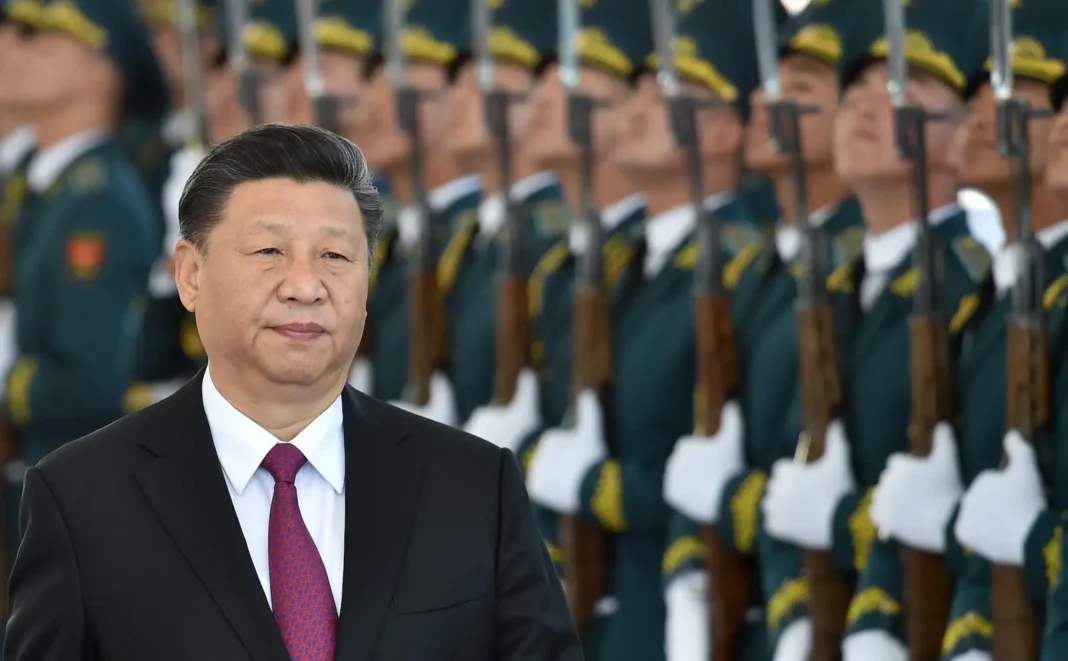Chinese commercial banks face mounting non-performing assets that has the potential to undermine the economy. At the close of the second quarter of the year, the balance of NPAs of commercial banks was 2.95 trillion yuan. The non-performing loan ratio was 1.67 per cent.
In the first half of the year, manufacturing loans increased by 3.3 trillion yuan, an increase of 1.6 trillion yuan year-on-year, of which high-tech manufacturing loans increased by 28.9% year-on-year. In the first half of the year, “the disposal of non-performing assets was 1.41 trillion yuan, an increase of 219.7 billion yuan year-on-year”.
According to media repeports, entrusted loans and trust loans “fell by 380.6 billion yuan in the first half of this year. The CBIRC will “continue to strictly prevent the rebound of shadow credit banking, forbid multi-layer nested investment, idle capital transfer and shifting from real to virtual, bring all financial activities under supervision, and unify supervision standards of similar institutions and products.” The data available show that the “scale of China’s quasi-credit shadow banking has dropped by more than 25 trillion yuan from its historical peak, and the momentum of savage expansion has been curbed”.
By the end of June, interbank wealth management in China “declined from over 6 trillion yuan at its peak to around 10 billion yuan”, Liu Zhongrui, deputy director-general of the CBIRC’s statistics, IT & risk surveillance department, is quoted by media as saying.
Small and medium-sized banks have total assets of 96 trillion yuan, accounting for about 29 percent of the banking sector’s total. Small and medium-sized banks’ loans to agriculture, rural areas and farmers and loans to small and micro enterprises account for 39% and 46% of the lending, respectively. “Small and medium-sized banks have handled non-performing loans worth 594.5 billion yuan (about $87.8 billion) in the first half of this year, up 118.4 billion yuan over the same period last year.”
The reports say that by the end of May 2022, foreign banks had set up 41 foreign-funded corporate banks, 116 foreign bank branches and 134 representative offices in China. Overseas insurance institutions had set up 67 foreign-funded insurance institutions and 80 representative offices in China.
The Global Times reports: “In June, real estate loans increased by 200.3 billion yuan, and the overall operation of real estate credit was stable, according to the CBIRC. The regulator will work with the People’s Bank of China, the central bank, to lower the floor of interest rates on first-time home loans by 20 basis points and guide banks to speed up mortgage loan approval, which has reached the fastest pace since 2019, CBIRC said”.
The CBIRC is expected to follow the motto of ‘houses are for living, not for speculation’, implement differentiated housing credit policies for each city, and prudently defuse risks in the real estate sector. The CBIRC is said to have attached importance to the guarantee of house deliveries after criticism emerged in various quarters. The authorities have “stepped up coordination with relevant departments to support local governments in their efforts to ensure housing deliveries, people’s wellbeing and stability”. The regulator will encourage banks to” actively study the plan to solve the funding gap, do a good job in providing credit, and assist in promoting the quick resumption of construction and early delivery of housing”. Guaranteeing the delivery of housing is a “top priority, which will be the work focus of local governments in the second half of the year”, a Guangzhou-based veteran industry observer surnamed Zhao told the Global Times on Thursday. ‘The core of house delivery is to guarantee the interests of homebuyers, adding, “banks could roll over mortgage loans until the projects are completed or construction actually resumes, which may be what financial regulators are trying to say”
The media including The Global Times have extensively quoted Tian Yun, a Beijing-based veteran macroeconomic analyst, that the improvement of the real estate industry is important for the “recovery of investment and consumption, which will be the driving forces of economic growth in the second half of the year”. He is quoted as saying: “The deterioration in the housing industry in the second quarter must be reversed as soon as possible so that property developers will not pass on bad debts to buyers because of unfinished, stalled housing projects.”

